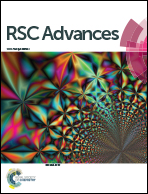Synergistic effect of a biodegradable Mg–Zn alloy on osteogenic activity and anti-biofilm ability: an in vitro and in vivo study
Abstract
It is desirable for orthopaedic implants to possess good osteointegration and anti-biofilm ability simultaneously for the prevention of implant associated infections and promotion of osteointegration. In this study, both of the anti-biofilm ability and osteogenic activity of a Mg–Zn alloy as a novel magnesium alloy were investigated systematically. The in vitro findings revealed that the Mg–Zn alloy promoted osteogenic differentiation and gene expression in the rat bone mesenchymal stem cells (rBMSCs), and showed better antibacterial ability than titanium (Ti). Good antibacterial ability was also observed in vivo in a rat distal femur model; the micro-CT and histological results revealed superior osteointegration of the Mg–Zn alloy in vivo despite the presence of methicillin-resistant Staphylococcus aureus (MRSA). The alkaline pH together with magnesium and zinc ions released from the Mg–Zn alloy may have synergistic effects on the antibacterial ability and osteogenic activity of the Mg–Zn alloy. The results demonstrate that the Mg–Zn alloy possesses osteointegration ability even in the presence of MRSA.


 Please wait while we load your content...
Please wait while we load your content...